#Technische Universität Berlin
Photo
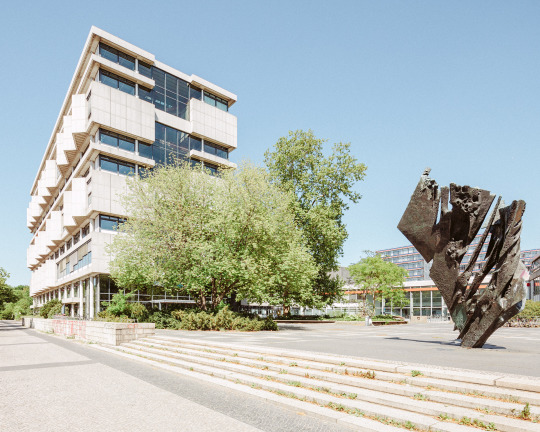
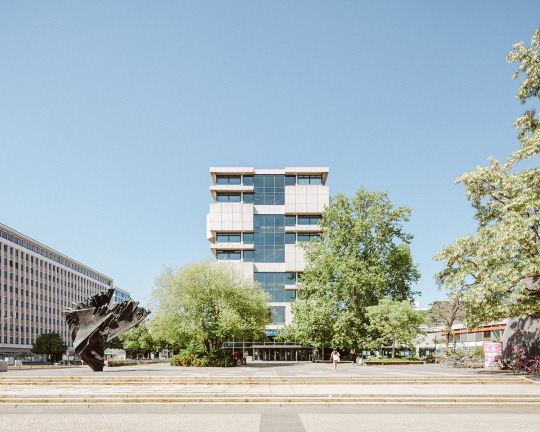
Berlin
Charlottenburg
TU Berlin
Canon TS-E 17mm f/4L@Canon EOS 5D Mark II
#Canon EOS 5D Mark II#Canon TS-E 17mm f/4L#germany#Deutschland#Berlin#Charlottenburg#TU Berlin#Technische Universität Berlin#architecture#Architektur#building#Gebäude#Haus#modern#urban#city#trees#Bäume#stairs#Treppenstufen#geometry#tilt-shift
2 notes
·
View notes
Text
Clark Art Institute Awards Bénédicte Savoy Prize for Excellence in Arts Writing
Bénédicte Savoy, an expert on the repatriation of looted objects, is the recipient of the Clark Art Institute 2024 Clark Prize for Excellence in Arts Writing.
Prof. Dr. Bénédicte Savoy, recipient of the Clark Art Institute 2024 Clark Prize for Excellence in Arts Writing. Image credit: Maurice Weiss
Bénédicte Savoy, an expert on the repatriation of looted objects, is the recipient of the Clark Art Institute 2024 Clark Prize for Excellence in Arts Writing.
ARCENTRON NEWS
WILLIAMSTOWN, MASSACHUSETTS— The Clark Art Institute has awarded the 2024 Clark…
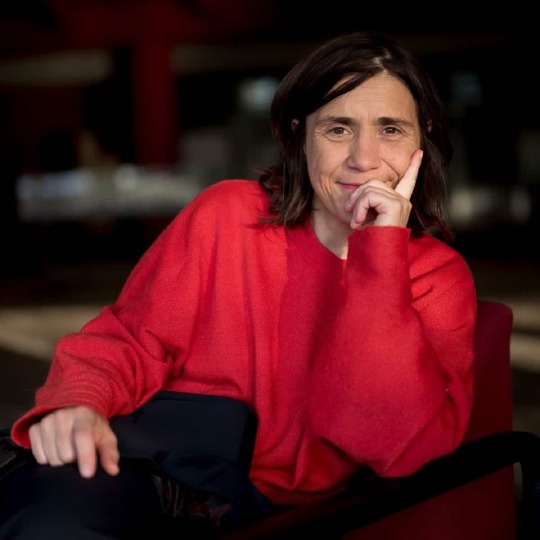
View On WordPress
#African Cultural Heritage#Art History#Art Museums#Art Writing#Bénédicte Savoy#Clark Art Institute#Cultural Objects#Museum Exhibitions#Repatriation of Art#Restitution#Technische Universität Berlin
0 notes
Text
Baustoff Lehm erspart Klimatechnik
Berlin: „..Laut eines Forschungsprojektes der Technischen Universität Berlin, gefördert durch die Deutsche Bundesstiftung Umwelt, könne beim Mietwohnungsbau unter Verwendung von klimaregulierenden Baustoffen wie Holz und Lehm, auf aufwändige Klimatechnik verzichtet werden.
Nachweisen sollen das zwei Wohngebäude, die in Berlin errichtet werden: eines in Holz-Lehm- und eines in…
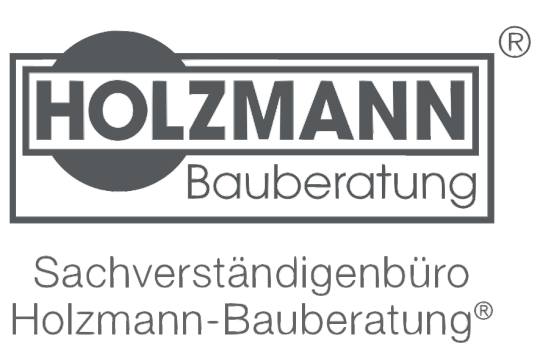
View On WordPress
#Bauen#Baustoff#Baustoffe#Bauwerkskosten#Berlin#Energieeffizienz#Feuchtigkeit#Holz#Klimatechnik#Lehm#Materialien#Raumklima#Technische Universität Berlin#Wohnen
0 notes
Audio
The inexpensive University in UK that uses trainees the same degree as well as certification as traditional universities have actually been getting increasingly more popularity in recent years, with several trainees in the UK opting to attend these programs as opposed to their standard equivalents. What are the pros and also disadvantages of this type of college education and learning? In this write-up, some thoughts on the subject based on experience going to an University in the UK over the past few years will be shared. Pupil life, teacher-student proportion, sound collection, jobs services, and also on-campus housing. University in the UK can be a wonderful economic chance for pupils of all backgrounds. A lot of overseas pupils research study right here. Visit https://studyabroadupdates.com/category/study-in-germany/technical-university-berlin/
1 note
·
View note
Text
Holzschnittartig? 23 Holzschnitte aus vier Jahrhunderten: Berlin bis 02. 10. 2022
Holzschnittartig? 23 Holzschnitte aus vier Jahrhunderten: Berlin bis 02. 10. 2022
Sind Holzschnitte holzschnittartig? Entsprechen sie tatsächlich den klischeehaften Vorstellungen, die man bis heute mit dem Medium verbindet? Welche Möglichkeiten bietet das technische Verfahren und wie haben Künstler*innen diese Möglichkeiten zu den verschiedenen Zeiten genutzt? Begleitend zur groß angelegten „Holzschnitt“-Ausstellung im Kupferstichkabinett nehmen sich Studierende der…

View On WordPress
#Berlin#Drucktechnik#Gemäldegalerie#Holzschnitt#holzschnittartig#Kulturforum#Kunstwissenschaft#Kupferstichkabinett#Magdalena Bushart#Material#Technik#Technische Universität Berlin#Welt des Holzschnitt
0 notes
Text
办学历TUB毕业证成绩单offer,学生卡,转学证明,回国人员认证Q薇280 137 1829办理|柏林工业大学TUB本科在读学历成绩单,办理柏林工业大学硕士毕业成绩单(留信认证,永久入库.网上可查)办理TUB毕业成绩单学历学位认证,雅思代考,学校代申请,名校保录,开请假条,改GPA,改成绩,学生卡,ID卡,雅思考试,托福考试Technische Universität Berlin

#办学历TUB毕业证成绩单offer#学生卡#转学证明#回国人员认证Q薇280 137 1829办理|柏林工业大学TUB本科在读学历成绩单#办理柏林工业大学硕士毕业成绩单(留信认证#永久入库.网上可查)办理TUB毕业成绩单学历学位认证#雅思代考#学校代申请#名校保录#开请假条#改GPA#改成绩#ID卡#雅思考试#托福考试Technische Universität Berlin
0 notes
Text
办TUB毕业证成绩单Offer.在读证明.学生卡.信封Q微28 01371829办理|柏林工业大学TUB本科毕业证成绩单,办理柏林工业大学硕士毕业成绩单留信认证学历认证办理TUB毕业证成绩单offer录取通知书,学生卡,雅思成绩单,托福成绩单,等各种在读或毕业材料的防伪工艺Technische Universität Berlin

#办TUB毕业证成绩单Offer.在读证明.学生卡.信封Q微28 01371829办理|柏林工业大学TUB本科毕业证成绩单#办理柏林工业大学硕士毕业成绩单留信认证学历认证办理TUB毕业证成绩单offer录取通知书#学生卡#雅思成绩单#托福成绩单#等各种在读或毕业材料的防伪工艺Technische Universität Berlin
0 notes
Text

EMILIO SAKRAYA? Não! É apenas ALEXANDER SCHWARZ, ele é filho de ATENA do chalé 6 e tem VINTE E SETE ANOS. A TV Hefesto informa no guia de programação que ele está no NÍVEL III por estar no Acampamento há QUINZE ANOS, sabia? E se lá estiver certo, ZANDER é bastante DETERMINADO mas também dizem que ele é ORGULHOSO. Mas você sabe como Hefesto é, sempre inventando fake news pra atrair audiência.
B I O G R A F I A
Friedrich Schwarz é um arquiteto renomado e visionário que projetou alguns dos edifícios mais emblemáticos do mundo. Ele é amplamente conhecido por sua criatividade, paixão pela sustentabilidade e seu compromisso em criar espaços que inspirem as pessoas. Nascido em uma família bem sucedida na Alemanha, se interessou pela arte e pelo design desde cedo. Estudou arquitetura na Technische Universität Berlin e, após se formar, trabalhou em diversos escritórios de arquitetura renomados até finalmente fundar sua própria empresa, chamada IdeenHaus, com o objetivo de criar espaços que sejam ao mesmo tempo bonitos e funcionais.
E não foi só na vida profissional que o senhor Schwarz prosperou: três anos após ter fundado a IdeenHaus, casou-se e teve três lindos filhos. Ou melhor, foi assim que pensou até o fatídico dia em que recebeu uma ligação que mudou sua vida. A voz da secretária, sempre serena e eficiente, soou diferente ao telefone: "Ér… Sr. Schwarz? Há um bebê aqui na recepção. Uma carta o acompanha."
Friedrich, intrigado e um tanto perplexo, correu até a recepção da empresa. Lá, encontrou um bebê adormecido em um cesto, ao lado de um envelope branco. Com as mãos trêmulas, ele abriu a carta e seus olhos se arregalaram ao ler as palavras escritas em caligrafia elegante. O que ele faria com essa criança inesperada em sua vida? A carta a qual acompanhava o bebê continha algumas instruções, mas sua mente sempre voltada para soluções não foi capaz de traçar um plano. Deixou o bebê sob os cuidados da secretária durante todo o dia e, quando retornou para casa com o suposto filho, não foi tão bem recebido assim pela esposa.
Obviamente ele não poderia abandonar o filho porque isso seria o mesmo que colocar um alvo nas costas da indefesa criança. Entre muitas brigas e discussões, conseguiu ficar com o garoto até os doze anos, idade com a qual, segundo as informações contidas na carta deixada para ele, era permitido ingressar no tal Acampamento Meio-Sangue. Desta forma, seu filho Alexander iria morar com uns tios em Nova Iorque e, durante o período de férias escolares, passaria um tempo no Acampamento para treinar suas habilidades.
Quando chegou ao lugar destinado aos semideuses, levou aproximadamente dois meses para ser reconhecido por sua mãe e, honestamente, se questionava o porquê demorou tanto para a deusa da sabedoria se pronunciar. Foram longos dias de treinamento árduo e, durante a transição para o nível três, Zander acreditou por um momento que ficaria para sempre no segundo nível. No entanto, tal dificuldade lhe serviu como inspiração para iniciar uma profissão no mundo mortal como personal trainer. Desta forma, estaria cada vez mais focado em aumentar sua força e resistência, consequentemente lhe preparando para enfrentar os desafios que viriam pela frente.
Hoje em dia, Alexander mantém uma frequência baixa de correspondência com o pai, mas eles ainda se falam. Apesar dele não ter seguido no ramo da família, o homem se orgulha pelo filho ter conseguido conciliar bem uma vida “normal” com seus deveres de semideus. Todas as vezes que eles se despedem, Friedrich encerra o contato com um carinhoso: por favor, se mantenha vivo. Zander estava na academia mortal quando recebeu a mensagem de Dionísio e, apesar de ser contra a sua vontade, sequer pestanejou antes de retornar ao Acampamento.
P O D E R E S
Visão Estratégica: Desvendando os Segredos do Campo de Batalha
A Visão Estratégica é uma habilidade formidável que transforma Alexander em um estrategista excepcional, capaz de analisar o campo de batalha com uma mente afiada e tomar decisões precisas que auxiliam na vitória. Essa habilidade se manifesta em diferentes níveis, desde a percepção aguçada até a capacidade de identificar oportunidades e explorar fraquezas inimigas.
H A B I L I D A D E S
Agilidade sobre-humana e Previsão.
A R M A
Θεία Κρίση (Theia Krisi): Uma espada imponente e elegante, forjada em ferro estígio, um metal lendário conhecido por sua força e resistência contra monstros. Seu cabo é feito de madeira de carvalho, esculpido com intrincados desenhos que lembram folhas de oliveira, símbolo da paz e da sabedoria. A lâmina, afiada como um raio, possui um brilho metálico que cintila à luz do sol, enquanto uma leve aura azulada emana de sua superfície, um sinal do poder divino que reside em seu interior.
Essa arma foi forjada por Hefesto, o deus ferreiro, a pedido de Atena, deusa da sabedoria e da guerra. Ela foi presenteada a seu filho em sua primeira missão como um símbolo de sua proteção e poder. Desde então, a Espada acompanhou o semideus em suas aventuras, defendendo-o de inúmeros monstros e inimigos. Quando não está em uso, a arma se transforma em um bracelete elegante e discreto, feito do mesmo ferro estígio da lâmina que se encaixa perfeitamente no pulso e possui os mesmos detalhes da espada.
M A L D I Ç Ã O / B E N Ç Ã O
Ainda não possui.
A T I V I D A D E S
Alexander sempre demonstrou um talento nato para o planejamento e a resolução de problemas complexos. A prova de inteligência estratégica era árdua e exigia muito mais do que apenas conhecimento. Ele precisava pensar de forma criativa, analisar cenários complexos e tomar decisões sob pressão, por isso, se dedicou de corpo e alma à tarefa. Ao final da prova, Zander esperava ansiosamente pelo sinal de Atena. E então, para sua imensa alegria, uma coruja majestosa pousou em seu ombro, confirmando sua aprovação. A partir desse dia, Alexander dedica-se incansavelmente à sua nova função, estudando sempre que pode sobre táticas de guerra, estratégias de combate e a arte da liderança.
Sendo assim, ele faz parte do grupo dos Estrategistas e, como esporte, também pratica escalada individualmente.
2 notes
·
View notes
Text

Asteroid that impacted near Berlin identified as a rare Aubrite
Jenniskens’ collaborators at the Museum für Naturkunde officially announced that the first examinations of one of these pieces with an electron beam microprobe prove the typical mineralogy and chemical composition of an achondrite of the aubrite type
The official classification now aligns with what many suspected from merely looking at the images of the strange meteorites that fell near Berlin on January 21, 2024. They belong to a rare group called “aubrites”.
“They were devilishly difficult to find because, from a distance, they look like other rocks on Earth,” said SETI Institute meteor astronomer Dr. Peter Jenniskens. “Close up, not so much.”
Jenniskens traveled from San Francisco to Berlin to search the fields just south of the village of Ribbeck with Museum für Naturkunde (MfN) researcher Dr. Lutz Hecht, guiding a team of students and staff from the MfN, the Freie Universität Berlin, the Deutches zentrum für Luft und Raumfahrt, and the Technische Universität Berlin in the days following the fall.
“Even with superb directions by meteor astronomers Drs. Pavel Spurný, Jiří Borovička and Lukáš Shrbený of the Astronomical Institute of the Czech Academy of Sciences, who calculated how the strong winds blew the meteorites, and predicted that these could be rare enstatite-rich meteorites based on the light emitted by the fireball, our search team initially could not easily spot them on the ground,” said Jenniskens.
Unlike other meteorites which have a thin crust of black glass from atmospheric heat, these meteorites have a mostly translucent glass crust.
“We only spotted the meteorites after a Polish team of meteorite hunters had identified the first find and could show us what to look for,” said Jenniskens. “After that, our first finds were made quickly by Freie Universität students Dominik Dieter and Cara Weihe.”
The meteorites are fragments of the small asteroid 2024 BX1, first spotted with a telescope at Konkoly Observatory in Hungary by astronomer Dr. Krisztián Sárneczky, tracked and then predicted to impact Earth’s atmosphere by NASA’s Scout and ESA’s Meerkat Asteroid Guard impact hazard assessment systems, with Davide Farnocchia of JPL/Caltech providing frequent trajectory updates, and finally causing a bright fireball that was seen and filmed. This was Jenniskens’ fourth guided recovery of such a small asteroid impact, following a 2008 impact in Sudan, a 2018 impact in Botswana, and a 2023 impact in France.
Today, Jenniskens’ collaborators at the Museum für Naturkunde officially announced that the first examinations of one of these pieces with an electron beam microprobe prove the typical mineralogy and chemical composition of an achondrite of the aubrite type. This result was submitted to the International Nomenclature Commission of the Meteoritical Society on February 2, 2024, for examination and confirmation.
The name of the meteorite comes from the village of Aubrés in France, where a similar meteorite fell on September 14, 1836. The museum has a fragment of that in the collection.
“Based on this evidence, we were able to make a rough classification relatively quickly,” said Dr. Ansgar Greshake, scientific head of the museum's meteorite collection. “This underlines the immense importance of collections for research. So far, there is only material from eleven other observed falls of this type in meteorite collections worldwide.”
“Aubrites do not look like what people generally imagine meteorites to look like. Aubrites look more like a gray granite and consist mainly of the magnesium silicates enstatite and forsterite,” said Christopher Hamann from the Museum für Naturkunde, who was involved in the initial classification and took part in the search. “It contains hardly any iron and the glassy crust, which is usually a good way to recognize meteorites, looks completely different than that of most other meteorites. Aubrites are therefore difficult to detect in the field.”
About the SETI Institute
Founded in 1984, the SETI Institute is a non-profit, multi-disciplinary research and education organization whose mission is to lead humanity’s quest to understand the origins and prevalence of life and intelligence in the Universe and to share that knowledge with the world. Our research encompasses the physical and biological sciences and leverages expertise in data analytics, machine learning and advanced signal detection technologies. The SETI Institute is a distinguished research partner for industry, academia and government agencies, including NASA and NSF.
IMAGE....Aubrite meteorite from asteroid 2024 BX1, photographed at the Museum für Naturkunde Berlin by Laura Kranich, a Freie Universität MSc student and member of the Arbeitskreis Meteore, who participated in the search and found this meteorite near the village of Ribbeck, Germany. Credit Museum für Naturkunde Berlin by Laura Kranic
2 notes
·
View notes
Text


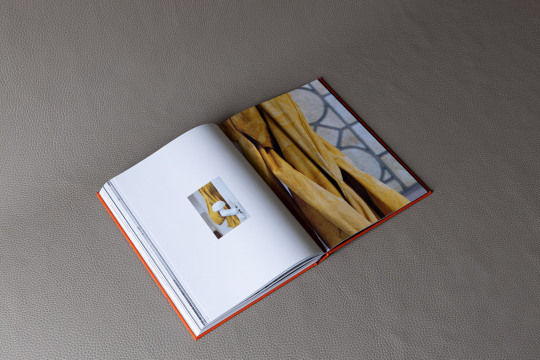

“Sehnsüchte, Prozessstufe II” by Linda Weiß
Part of the exhibition “etwa faustgroß”
Villa Merkel, November 11–27, 2022
Weiß’s work asks if it is possible to think productively, to create with sugar cycles of ecological systems that are yet still dependent on the massive global sugar industry and all of its attendant historical baggage. The show is in part about the aesthetic, ecological, social, and political possibilities of largely DIY processes like fermentation, for example. Here used as one that converts sugar into cellular energy, it operates as both metaphor and material biological process, in what Lauren Fournier describes in Fermenting Feminism as a “symbiosis between species and coevolution, accessibility and bioavailability, conservation and transformation, future and survival… and finally to the reduction of damage and care.” According to Fournier, fermentation can be understood as a feminist or queer practice; fermenting methods in life and in art draw attention to ecological relations as well as ways of caring for other kin, to the vast variation of the temporalities of life, and to humanity’s bacterial ancestors.
Weiß’s work stages a digestive aesthetics that pushes us to think about the possibly queer politics of digestion (as Ramzi Fawaz explores elsewhere) through the specific ways in which sugar moves and transforms in different systems and for different functions. Drawing on contemporary theoretical works on feminist theory, plants and weird fungal life, and speculative fictions, Weiß’s focus on certain biological conversions of sugar not only points toward possible clean energy alternatives (we’re not there yet, the work acknowledges this with its dependence on a small lithium battery for power) but also requires that visitors acknowledge their own co-dependencies and how those substances are produced and circulated.
Sehnsüchte: in English, longings, but it’s a word known for its impossibility to translate exactly. With etymological origins in the words for yearning (das Sehnen) and addiction (die Sucht) the title of Weiß’s show asks us to dwell in the sticky space between both. Sugar seduces, yes, but is nonhuman nourishment here as well, a substance that crosses the species divide or blurs it, a link between complex biological organisms in symbiotic relation.
Text by Alison Sperling
Alison Sperling is an IPODI Postdoctoral Fellow at the Technische Universität Berlin where she works on queer and feminist theory, science fiction, and the Anthropocene.
#alison sperling#jochen wagner#linda weiß#abkstuttgart#lisagranada#javierklausgastelum#patricia paryz#villa merkel#stuttgart#esslingen#anette c. halm#jaewon park#laura becker
2 notes
·
View notes
Text
No, Hedy Lamarr did not ‘make’ Wi-Fi
Kimberly Moravec debunks a meme.
There’s a grain of truth in it—but only a grain. Lamarr is co-author of a patent for fundamental technology that somewhat resembles techniques used in early versions of Wi-Fi. But the resemblance is only superficial, and the technique had been theorized, and patented, multiple times before.
To be fair, it sounds quite plausible. Recent re-assessments of history have revealed that the contributions of scientists like astrophysicist Jocelyn Bell Burnell and chemist Rosalind Franklin were frequently undervalued. But it doesn’t follow that every woman’s contribution to science was undervalued. Hedy Lamarr’s exaggerated contribution to Wi-Fi is a particular case in point.
The comments section under the Facebook meme is a depressing place; facts are few and emotions are high. Unfounded claims about what she invented abound (“And sonar!” “And cell phones!”), and detailed attempts to set the record straight are attacked (“Is the term “mansplainer” new to you?” “…no one wants to hear his white guy rescue of all their credit for everything…” “Sour grapes in a box.”).
But maybe consider this: I am a woman with a degree in electrical engineering and a PhD in information systems, I believe strongly in the value and promotion of women in STEM, I have evaluated the claims using original documents, and I am still saying Hedy Lamarr had almost nothing to do with Wi-Fi.
The unvarnished reality is this. With few exceptions, women’s historical contributions to science and technology are underwhelming. This is because the barriers (access to education, childcare, and fair pay) were overwhelming. It wasn’t that long ago that women were almost universally believed to be intellectually inferior men. I remember the tail end of those days pretty keenly, and am deeply thankful that public opinion has substantially changed since.
And there is more good news. If many of the barriers to participation are removed, it turns out that women can be brilliant at science and technology. Women my age and younger are now making good careers for themselves, and some of them are reaching the top of their fields.
Take Professor Anja Feldman of Technische Universität Berlin, for example, who won the Gottfried Wilhelm Leibniz Prize and whose research articles have been cited nearly 20,000 times. Or Dr. Andrea Goldsmith of Stanford University, who has 70,000 citations and written three textbooks on wireless communications. Or Dina Papagiannaki, who is the Director of Engineering at Microsoft Azure.
These are just a few of the researchers and engineers in networking (the research area that includes Wi-Fi). Let’s not forget that there are even a few modern Hollywood actors with science degrees, like Danica McKellar (mathematics) and Mayim Bialik (neuroscience).
Women are brilliant at science and technology, and there is an abundance of evidence to support this fact. It isn’t necessary to spread lies about Golden-Age Hollywood movie stars to prove it.
8 notes
·
View notes
Text
Interview: Zuloark
Weltraum, a radio podcast about space on the jabbering Independent Coastal Radio NOR we hosted Juan Chacón, an architect, researcher and educator. He is the co-founder of the collective Zuloark (2001), which enables the open-source distribution of architectural and urban planning knowledge, a co-founder of the cooperative Zoohaus (2007) and part of the open-source network Inteligencias Colectivas (2010).

Zuloark's Collective Portrait at IX Zuloark International Congress in La Palma, Spain (2020). | Photo © Lourdes Cabrera
Since 2009, Juan has been researching community development models in Berlin. With Christina Serifi (Digital Architectuul Fellow 2020), he co-founded the Tirilab initiative, which explores intercultural heritage related to local technologies, gastronomy and cultural specialties of rural communities in northern Greece.

An atlas of rural commons in Northern Greece by TiriLab (Christina Serifi and Juan Chacón) were part of Future Architecture. | Photo via Future Architecture
Juan taught as a member of zuloark and researcher at UDK in Berlin, Pontificia Universidad Javeriana in Bogotá, Technische Universität in Berlin and San Jorge University in Zaragoza. His work with zuloark and zoohaus has been exhibited in the MoMA in New York, the Akademie der Kunste in Berlin, the Lisbon Architecture Triennial and the Matadero Museum in Madrid, among others.
-
Zuloark is an open office for architecture and urbanism. You co-founded it in Madrid in 2001 and in 2010 expanded its headquarters to La Coruña, Berlin, Bologna, Athens and La Palma. What does open office mean?
Juan Chacón: For Zuloark the word open office is not really well defined. Since our principle is based on belonging to the collective, It means that the environment or the name is open to everyone for participation. Also the word open reflects open source, that’s why we use it to define ourselves. Of course, there are so many voices in the collective and each one is defined in a different way.

Workshop in El Campo de Cebada, Madrid in Spain (2012). | Photo © zuloark
What is its approach?
JC: First of all we will need to define what it means architecture. We can understand architecture as a built environment but you can understand architecture as a place where education happens and then spaces are created in different ways. The practice of architecture can unfold in different ways.
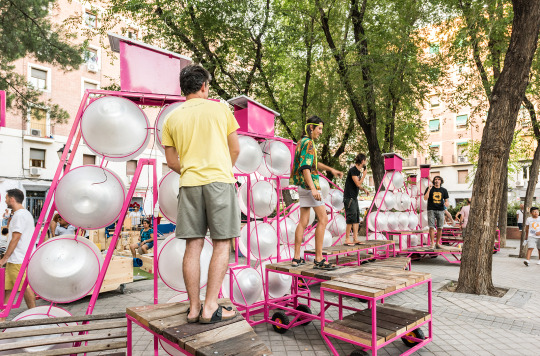
F.U.A!! Imagina Madrid (Zuloark + Enrique Espinosa -Eeestudio- + David Cardenas + Lys Villalba + Juanito Jones), Madrid, Spain (2017-2018). | Photo © Javier de Paz García
In Zuloark we don’t close a definition of one type of architecture but we try to engage with architecture in different layers and ways. Therefore we develop projects in different scales, we engage different communities and agents, we are trying to involve different parts in our practices, all this to create better places in a more participatory way that engages more people in the design of it.
In all these countries that I’ve mentioned?
JC: In 2001 we founded Zuloark and in 2010 we expanded. We founded it while we were students and between 2008 and 2010, after finishing our studies, we started to professionalize the structure. In that period members started to move around Europe and elsewhere, so we found a way to adapt to its members. When a member moves in a city also the office moves there and starts to activate different networks.

MADPAZ Conama Madrid (Zuloark + Enrique Espinosa -Eeestudio- + David Cardenas + Lys Villalba + Juanito Jones + María Mallo) Madrid, Spain (2016-2027). | Photo © Javier de Paz García
In a way you also have an open structure of work?
JC: In the last ten years we have been trying to develop governance, forecasting and evaluation systems and tools. We try to be strict in the way we organize, to benefit the participants and projects that are common to everyone. This creates the independence of work with some guidelines and fixed points towards the collective in order that we can be all coordinated. This methodology intends to create a structure that allows flexibility but at the same time allows the collective to work as a network not as independent units.
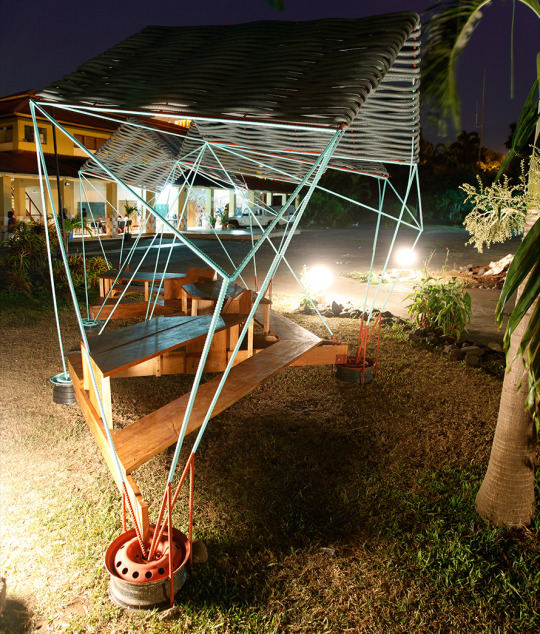
Pavillion in CCE Malabo, IC Red Guinea (Zoohaus) , Equatorial Guinea (2015). | Photo © zoohaus
Zuloark involves tactical urbanism, participation, festivals and construction workshops in a DIY way. How do you involve users in architecture?
JC: We never use the word user. It doesn’t exist in our vocabulary. We always involve the group of people or community in the process of final design. We share the methodology of how we can build the place together. When we design for example a public square, we don’t think about how we will work with the users. We are going to be part of this square and of the group of people creating the place by itself.
You co-founded the cooperative Zoohaus, which initiated the international practical research Collective Intelligences; what is the field of this research?
JC: Zoohaus is a wider network than Zuloark. It is a network launched in 2010 that tries to rephrase what we are doing. It was constituted in Madrid as a cultural association that engaged in cultural projects related to the public space. The idea is to engage and collaborate with networks all around the world based on intelligent design. We started to create a catalog where anybody can upload and contribute to its database their solutions. It is not organized by institutions but is coming from communities or individuals.



Casa Tejida en NOcaima (Santiago Pradilla y Zuloark), NOcaima Cundinamarca, Colombia (2019). | Photo © Federico Cairoli
Zuloark has had an active involvement in academic contexts, teaching in Madrid, Berlin and Monterrey. What is based on your educational practice?
JC: ...is based on ourselves. The most important educational process for Zuloark is Zuloark itself. We consider a collective as a kind of learning environment. We were always talking about the Vygotsky’s Zone of proximal development, a concept that explains how you can learn things by helping each other and creating environments of professional learning, where you can always engage with new skills. This is the core of Zuloark. The second thing started with educational models in collaboration with universities in a more punctual way, proposing workshops or formats that can take education out of the universities itself. Some of us engaged in a more formal way inside universities with an approach of situated knowledge, always learning about a specific case going out of the theoretical level and trying to create hands-on spaces.

Aquí hay Dragones La Palma, Canary Islands, Spain (2020). | Photo © zuloark
How do you manage to fund your projects?
JC: The funding is very diverse, fifty percent are public coming from cultural institutions through grants and open calls, also applying for European funding. These funds are for self initiated projects. Other part is based on private commissions for clients, which want to be involved in participatory projects.
Your collaborations include different collectives; how do you choose them and develop the working process?
JC: There are many levels, one of them is based on a daily basis collaboration where people have a regular income, then is a network of collaborators that have some collaborations during a year in some project and we define them as individual agents. We create a lot of partnerships with other entities to learn from. All collaborations are developing during a period of time so we can create some kind of trust among each other.
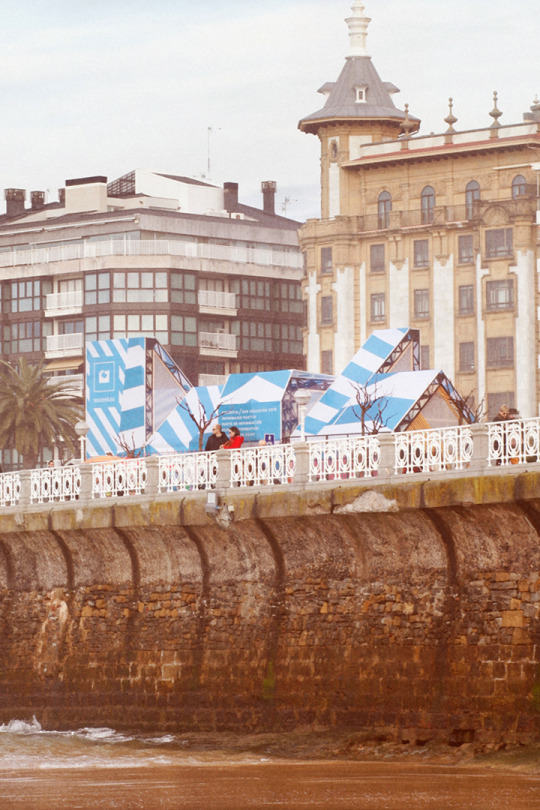
Yesterday you said tomorrow Information Pavillion and 274 Benches (Zuloark + Tipi Studio + Alberto Rey), San Sebastian, Spain (2016).| Photo © zuloark
On what shall architecture focus in the future?
JC: On situated knowledge, waste, emissions, environment, society and social interactions.
You can listen to the WELTRAUM interview on Independent radio NOR
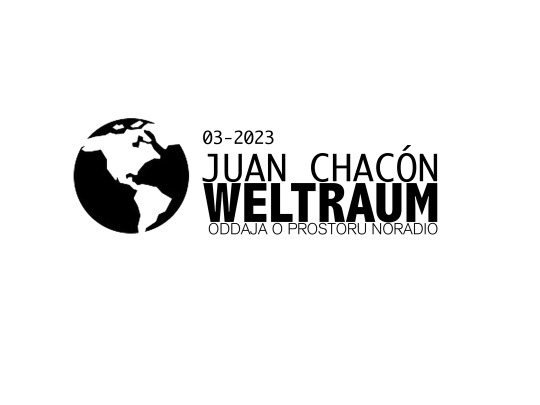
3 notes
·
View notes
Text
Studying in Germany
Germany is the most popular non-Anglophone study destination, and the 4th most popular overall – only the US, UK, and Australia welcome more international students each year.
It’s a country characterized by variety. Trendy and modern, Berlin can seem a world away from the more traditional and conservative Munich. The gleaming skyscrapers of Frankfurt form a stark contrast to quaint Heidelberg. And if bustling and fast-paced Hamburg gets too much, you can always retreat to the peaceful and picturesque Middle Rhine region.
Universities: In terms of higher education, unis in Germany offer plenty of choice and include some of the most prestigious institutions in Europe. Germany’s overall highest ranked university in the QS World University Rankings is Ruprecht-Karls-Universität Heidelberg, followed by Technische Universität München. Beyond that, every major German city has at least one university ranked among the world’s best. A total of 17 German unis make the world’s top 250, the rest is included in the world’s top 650. This established Germany well within the world’s higher education elite. In addition to world-class universities, it offers a high quality of living, extensive support and scholarship schemes for international students, and decent post-graduation employment prospects.
2 notes
·
View notes
Text
Why Germany Should Be Your Destination for Master's Studies
Are you contemplating the next step in your academic journey? If so, consider the enriching experience of pursuing your master's degree in Germany. Boasting a convergence of world-class universities, vibrant cultural heritage, and an economically robust environment, Germany presents an enticing proposition for international students seeking to further their education. In this comprehensive guide, we'll delve into the myriad reasons why studying for your masters in Germany could be the transformative experience you've been seeking.
World-Class Universities: A Nexus of Academic Excellence
Germany stands tall among nations for its esteemed roster of universities, consistently ranked among the top globally. Institutions like the Technische Universität München and the Humboldt-Universität Zu Berlin are renowned for their commitment to academic excellence, cutting-edge research opportunities, and nurturing environments conducive to intellectual growth.
Affordable Education Fees: Accessibility Without Compromise
In stark contrast to many other nations, Germany offers tuition-free education at public universities for both domestic and international students. This egalitarian approach to education ensures that financial constraints do not impede access to quality higher education. With only nominal administrative fees to contend with, pursuing your masters in Germany becomes an eminently feasible prospect for aspiring scholars from diverse backgrounds.
Work Opportunities While Studying: Broaden Your Horizons
Germany's dynamic economy presents a plethora of opportunities for international students to engage in part-time employment while pursuing their studies. Beyond serving as a means to offset living expenses, these work opportunities offer invaluable hands-on experience and facilitate the development of a robust professional network—an asset that will undoubtedly prove invaluable as you navigate your post-graduate career path.
Quality of Life: Embrace the German Experience
Immerse yourself in the unparalleled quality of life that Germany has to offer, characterized by a rich cultural tapestry, breath taking landscapes, and a myriad of recreational pursuits. Whether you're exploring the historic streets of Berlin or embarking on a scenic hike through the Bavarian countryside, Germany promises a lifestyle that seamlessly blends urban sophistication with natural splendor.
Cultural Diversity: A Global Mosaic
Germany's historical legacy as a beacon of multiculturalism finds vibrant expression in its modern-day society, offering students a unique opportunity to engage with individuals from diverse cultural backgrounds. Studying in Germany affords you the chance to broaden your horizons, foster cross-cultural understanding, and cultivate a global perspective—an invaluable asset in today's interconnected world.
Future Prospects: Forge Your Path to Success
Armed with a masters in Germany university, graduates are primed for success on the global stage. Widely recognized for their academic rigor and practical relevance, German qualifications enjoy high esteem among employers worldwide, opening doors to a myriad of career opportunities across diverse industries.
Top Colleges and Courses: A Wealth of Options
Whether your academic interests lie in engineering, business, medicine, or beyond, Germany offers a diverse array of master's programs at top-tier institutions. From the Technische Universität München to the Ludwig-Maximilians-Universität München, you'll find a wealth of opportunities to pursue your academic passions and chart your course towards success.
Student Visa and Passport Requirements: Navigating the Path to Germany
Embarking on your educational journey in Germany necessitates a thorough understanding of the visa and passport requirements. From scheduling visa appointments to assembling requisite documentation, meticulous preparation is key to ensuring a smooth transition to student life in Germany.
Cost of Living: Planning for Financial Well-Being
While the cost of living in Germany may vary depending on your location and lifestyle preferences, prudent budgeting is essential for maintaining financial stability. From accommodation to daily expenses, a comprehensive financial plan will enable you to make the most of your student experience without undue financial strain.
Scholarships to Apply For: Unlocking Financial Support
Numerous scholarship opportunities abound for international students pursuing their master's degrees in Germany. From the prestigious DAAD Scholarship Programs to the Heinrich Böll Foundation Scholarships, these financial awards provide invaluable support and open doors to academic excellence without the burden of financial constraints.
Highest Paying Jobs After Masters: Paving the Path to Professional Success
Masters in GermanyText university paves the way to lucrative career opportunities across diverse industries. Whether you're a sales expert, ICT specialist, or healthcare professional, Germany offers a wealth of high-paying jobs that reward academic excellence and practical expertise.
Conclusion
studying for your masters in Germany offers a transformative educational experience characterized by academic excellence, affordability, and cultural enrichment. From world-class universities to vibrant cultural experiences, Germany promises an educational journey like no other. So why wait? Take the leap and embark on your academic odyssey in Germany today. The doors to success await!
0 notes
Text
Best Countries to Study Abroad for Indian Students in 2024
In today's interconnected world, the pursuit of higher education transcends borders. Indian students are increasingly looking beyond their homeland for quality education, diverse experiences, and enhanced career prospects. The decision to study abroad is not merely about acquiring a degree; it's a transformative journey that enriches one's intellect, broadens perspectives, and fosters personal growth. At 1Cues we understand the importance of making informed choices when it comes to studying abroad. In this article, we explore the best countries for Indian students to embark on their study-abroad journey in 2024.

Why Study Abroad?
Studying at renowned international universities offers an enriching experience that equips students with the skills and knowledge needed to navigate the complexities of today's globalized world. Whether it's world-class education, exposure to diverse cultures, or enhanced career prospects, studying abroad opens doors to a myriad of opportunities. With a focus on practical education and access to cutting-edge facilities, overseas universities prepare students for success in their chosen fields.
Key Considerations Before Choosing a Study Destination
Before embarking on their study abroad journey, Indian students should consider several factors to ensure a fulfilling and rewarding experience:
Preferred Course:
The choice of course directly impacts the cost of education and the duration of study. Whether pursuing an undergraduate or graduate degree, it's essential to plan finances accordingly, especially for STEM courses, which may have higher tuition fees.
Cost of Living:
In addition to tuition fees, students must budget for living expenses, including rent, groceries, and transportation. The cost of living varies depending on the country and city, with some destinations offering more affordability than others.
Economic Opportunities:
Opting for a study destination with a thriving economy and flexible work laws can enhance job prospects post-graduation. Access to employment opportunities and the ability to work part-time while studying are crucial considerations.
Language and Culture:
Studying in a country with a different language and culture offers a unique opportunity for personal growth and development. Embracing new languages and cultural experiences can enrich the educational journey.
Best Countries for Indian Students to Study Abroad in 2024
United States of America (USA):
Renowned for its world-class universities and diverse academic offerings, the USA remains a top destination for Indian students. With opportunities for practical training and a vast array of programs, the USA provides a conducive environment for academic and professional growth.
Best Universities in the US
University
QS World University Ranking 2024
Massachusetts Institute of Technology (MIT)
1
Harvard University
5
Stanford University
3
University of California, Berkeley (UCB)
27
University of Chicago
10
University of Pennsylvania
13
Cornell University
20
California Institute of Technology (Caltech)
6
Yale University
18
Princeton University
16
Columbia University
22
Johns Hopkins University
24
University of California, Los Angeles (UCLA)
44
Germany:
Offering affordability, career opportunities, and exposure to a rich cultural landscape, Germany has emerged as a popular choice for Indian students. With its focus on research and practical training, German universities provide a holistic learning experience.
Best Universities in Germany
University
QS World University Ranking 2024
Technical University of Munich
49
Ludwig-Maximilians-Universität München
59
Ruprecht-Karls-Universität Heidelberg
65=
Freie Universitaet Berlin
118=
RWTH Aachen University
147=
KIT, Karlsruhe Institute of Technology
141=
Humboldt-Universität zu Berlin
131=
Technische Universität Berlin (TU Berlin)
158
Albert-Ludwigs-Universitaet Freiburg
189
Universität Hamburg
228
Eberhard Karls Universität Tübingen
169
Friedrich-Alexander-Universität Erlangen-Nürnberg
340=
University of Göttingen
215=
Australia:
With its relaxed visa requirements, cultural diversity, and emphasis on quality education, Australia attracts students from around the globe. The opportunity to work part-time while studying and access to scholarships further enhance its appeal.
Best Universities in Australia
University
QS World University Ranking 2024
The University of Melbourne
33
The University of New South Wales (UNSW Sydney)
45
The University of Sydney
41
The Australian National University
30
Monash University
57
The University of Queensland
50=
The University of Western Australia
90
The University of Adelaide
109
University of Technology Sydney
137
Macquarie University
195=
RMIT University
190=
University of Wollongong
185=
The University of Newcastle, Australia (UON)
192
Curtin University
193
Canada:
Known for its inclusive policies and high-quality education system, Canada offers a welcoming environment for international students. With opportunities to pursue a wide range of courses and a strong emphasis on research, Canadian universities provide a pathway to success.
Institute
QS World University Ranking 2024
University of Toronto
34=
McGill University
31
University of British Columbia
47
University of Alberta
110
University of Waterloo
154
Western University
172=
Université de Montréal
116=
University of Calgary
242
McMaster University
152
University of Ottawa
237=
Queen's University at Kingston
246=
Dalhousie University
308=
Simon Fraser University
328=
University of Victoria (UVic)
359=
University of Saskatchewan
473=
York University
456
United Kingdom (UK):
Renowned for its academic excellence and industry-aligned courses, the UK offers a wealth of opportunities for Indian students. With the introduction of post-study work visas and scholarship options, the UK remains a top choice for those seeking a world-class education.
Top universities in the UK
Institute
QS World University Ranking 2024
University of Cambridge
2
University of Oxford
4
Imperial College London
6=
UCL
8
The University of Edinburgh
15
The University of Manchester
28
King's College London
37
The London School of Economics and Political Science (LSE)
56
University of Bristol
61=
The University of Warwick
64
University of Leeds
86
University of Glasgow
81
Durham University
92
Spain:
Embracing the Bologna Process and offering internationally recognized degrees, Spain provides a unique opportunity for Indian students to immerse themselves in a vibrant cultural setting while pursuing their academic goals.
Top Universities in Spain
Institute
QS World University Ranking 2024
Universitat Autònoma de Barcelona
178
Universitat de Barcelona
184
Complutense University of Madrid
226=
Universidad Autónoma de Madrid
215=
University of Navarra
253=
Universitat Pompeu Fabra (Barcelona)
233=
Universidad Carlos III de Madrid (UC3M)
320=
Universidad Politécnica de Madrid (UPM)
488=
Universitat Politècnica de Catalunya · BarcelonaTech (UPC)
343=
University of Granada
494=
IE University
347=
Universitat Politècnica de València
400=
Universitat de Valencia
571-580
Universidad de Sevilla
561-570
Netherlands:
With its top-ranked universities and focus on practical learning, the Netherlands offers a conducive environment for academic excellence. Access to part-time work opportunities and scholarships make it an attractive destination for Indian students.
Best Universities in the Netherlands
Institute
QS World University Ranking 2024
Delft University of Technology
61=
University of Amsterdam
58
Utrecht University
112=
Eindhoven University of Technology
138
Leiden University
131=
University of Groningen
145
Wageningen University & Research
124
Erasmus University Rotterdam
208=
Vrije Universiteit Amsterdam
214
University of Twente
212=
Radboud University
232
Maastricht University
278
Tilburg University
398=
Why Choose 1Cues for Studying Overseas?
At 1Cues, we understand the challenges and aspirations of Indian students seeking to study abroad. Our programs are designed to offer quality education at affordable prices, with a focus on career readiness and global exposure. With a blend of online and offline learning experiences, interactive teaching methodologies, and a supportive community, we empower students to achieve their academic and professional goals.
In conclusion, studying abroad is a life-changing experience that opens doors to endless possibilities. By carefully considering factors such as course preferences, cost of living, economic opportunities, and cultural experiences, Indian students can make informed decisions about their study abroad journey. With the support of an education marketplace like 1Cues, they can embark on a path of academic excellence and global success.
0 notes
Text
Teil 1 von 2: Welche Universitätskliniken in Deutschland gibt es?

Die medizinische Landschaft in Deutschland ist durch eine Vielzahl hoch angesehener Universitätskliniken geprägt. Diese Kliniken, die eng mit den renommiertesten Universitäten des Landes verbunden sind, spielen eine zentrale Rolle in der Ausbildung von Ärzten, der Forschung und der Patientenversorgung. In diesem Artikel werfen wir einen genaueren Blick auf einige der führenden Universitätskliniken in Deutschland.
Aachen – RWTH
Die Rheinisch-Westfälische Technische Hochschule (RWTH) in Aachen beherbergt eines der bedeutendsten Universitätsklinika in Deutschland. Die enge Verbindung zwischen der RWTH und dem Universitätsklinikum Aachen ermöglicht eine umfassende medizinische Ausbildung und innovative Forschung. Das Klinikum bietet eine breite Palette von medizinischen Dienstleistungen und ist für seine Expertise in verschiedenen Fachgebieten bekannt.
Berlin – Charité
Die Charité in Berlin ist nicht nur eine der ältesten Universitätskliniken Deutschlands, sondern auch eine der größten europäischen Universitätskliniken. Sie besteht aus mehreren Standorten, darunter der Benjamin Franklin Campus der Freien Universität Berlin und die Humboldt-Universität zu Berlin. Die Charité spielt eine Schlüsselrolle in der deutschen Medizin und hat eine lange Geschichte der Spitzenleistungen in Forschung und Patientenversorgung.
Bochum – Ruhruniversität
Die Ruhr-Universität Bochum beheimatet ein renommiertes Universitätsklinikum, das eine herausragende Ausbildung in der medizinischen Versorgung bietet. Die Klinik ist für ihre interdisziplinäre Forschung und ihre hochmoderne Ausstattung bekannt. Studierende der Medizin an der Ruhr-Universität Bochum haben die Möglichkeit, von erfahrenen Fachleuten zu lernen und innovative medizinische Ansätze zu erforschen.
Bonn – Rheinische Friedrich-Wilhelm-Universität
Die Universitätsklinik Bonn, angegliedert an die Rheinische Friedrich-Wilhelm-Universität, zeichnet sich durch ihre exzellente Patientenversorgung und Forschung aus. Das Klinikum spielt eine entscheidende Rolle in der medizinischen Landschaft Nordrhein-Westfalens und darüber hinaus. Die Verbindung zur Universität ermöglicht es den Studierenden, von hochqualifizierten Lehrkräften zu lernen und an wegweisender Forschung teilzunehmen.
Düsseldorf – Heinrich Heine Universität
Die Medizinische Fakultät der Heinrich Heine Universität Düsseldorf ist eng mit dem Universitätsklinikum Düsseldorf verbunden. Das Klinikum ist bekannt für seine breite Palette von Fachgebieten und bietet eine exzellente Ausbildung für angehende Ärzte. Die enge Zusammenarbeit zwischen der Universität und dem Klinikum fördert nicht nur die Ausbildung, sondern auch die translationale Forschung.
Dresden – Universitätsklinikum Carl Gustav Carus
Das Universitätsklinikum Carl Gustav Carus in Dresden ist Teil der Technischen Universität Dresden und bietet eine herausragende medizinische Versorgung für die Region Sachsen. Das Klinikum ist bekannt für seine modernen Einrichtungen und seine führende Rolle in der medizinischen Forschung. Studierende haben hier die Möglichkeit, in einer dynamischen und innovationsgetriebenen Umgebung zu lernen.
Erlangen-Nürnberg – Friedrich-Alexander Universität
Die Friedrich-Alexander Universität in Erlangen-Nürnberg ist stolz auf ihr Universitätsklinikum, das eine enge Verbindung zwischen Forschung, Lehre und Patientenversorgung herstellt. Das Klinikum zeichnet sich durch seine interdisziplinäre Herangehensweise und seinen Beitrag zur medizinischen Wissenschaft aus. Studierende profitieren von einer praxisnahen Ausbildung und der Möglichkeit, an wegweisenden Forschungsprojekten teilzunehmen.
Essen – Universitätsklinikum
Das Universitätsklinikum Essen ist ein bedeutender Akteur im deutschen Gesundheitswesen und fest in die Universität Duisburg-Essen integriert. Mit einer breiten Palette von medizinischen Fachgebieten bietet das Klinikum innovative Diagnose- und Therapiemöglichkeiten. Die Studierenden haben die Gelegenheit, von erfahrenen Ärzten zu lernen und an hochkarätiger medizinischer Forschung teilzunehmen.
Frankfurt – Johann Wolfgang Goethe-Universität
Die Johann Wolfgang Goethe-Universität in Frankfurt am Main beherbergt ein renommiertes Universitätsklinikum, das sich durch exzellente Patientenversorgung und innovative Forschung auszeichnet. Das Klinikum ist in verschiedene Fachbereiche unterteilt und spielt eine wichtige Rolle in der Ausbildung angehender Mediziner. Die enge Verbindung zwischen Universität und Klinikum ermöglicht eine praxisnahe Ausbildung.
Freiburg – Albert-Ludwigs-Universität
Die Albert-Ludwigs-Universität Freiburg ist stolz auf ihr Universitätsklinikum, das eine herausragende medizinische Versorgung in der Region bietet. Das Klinikum ist für seine Forschungsexzellenz und modernen Einrichtungen bekannt. Studierende haben die Möglichkeit, in einer inspirierenden Umgebung zu lernen und aktiv an medizinischen Forschungsprojekten teilzunehmen.
Giessen – Justus-Liebig-Universität
Das Universitätsklinikum Giessen ist eng mit der Justus-Liebig-Universität verbunden und spielt eine wichtige Rolle in der medizinischen Landschaft Hessens. Die Klinik bietet eine breite Palette von medizinischen Dienstleistungen und ist für ihre Forschung auf verschiedenen Gebieten bekannt. Die Studierenden profitieren von einer praxisnahen Ausbildung und haben die Möglichkeit, in einer vielseitigen klinischen Umgebung zu lernen.
Göttingen – Georg-August-Universität
Die Georg-August-Universität in Göttingen ist stolz auf ihr Universitätsklinikum, das eine führende Rolle in der medizinischen Forschung und Patientenversorgung spielt. Das Klinikum ist für seine enge Zusammenarbeit mit der Universität und seine interdisziplinäre Ausrichtung bekannt. Studierende haben die Gelegenheit, von renommierten Fachleuten zu lernen und an wegweisenden Forschungsprojekten teilzunehmen.
Greifswald – Ernst-Moritz-Arndt Universität
Die Universitätsmedizin Greifswald, Teil der Ernst-Moritz-Arndt Universität, ist ein bedeutendes Zentrum für medizinische Forschung und Versorgung in Mecklenburg-Vorpommern. Das Klinikum bietet eine breite Palette von medizinischen Dienstleistungen und ist für seine Forschungsexzellenz bekannt. Studierende haben hier die Möglichkeit, in einer herausragenden wissenschaftlichen Umgebung zu lernen und sich aktiv an Forschungsaktivitäten zu beteiligen.
Halle-Wittenberg – Martin-Luther-Universität
Die Martin-Luther-Universität Halle-Wittenberg beherbergt ein Universitätsklinikum, das eine wichtige Rolle in der medizinischen Versorgung der Region spielt. Das Klinikum zeichnet sich durch seine qualitativ hochwertige Patientenversorgung und Forschung aus. Die Studierenden haben die Möglichkeit, von erfahrenen Ärzten zu lernen und an Projekten teilzunehmen, die die Zukunft der Medizin gestalten.
Hamburg – Universität
Die Universitätsklinik Hamburg-Eppendorf ist Teil der Universität Hamburg und zählt zu den führenden medizinischen Einrichtungen in Deutschland. Das Klinikum bietet eine breite Palette von Spezialgebieten und ist für seine Patientenversorgung auf höchstem Niveau bekannt. Studierende haben hier die Möglichkeit, von führenden Experten zu lernen und sich an wegweisenden Forschungsprojekten zu beteiligen.
Hannover – Medizinische Hochschule
Die Medizinische Hochschule Hannover (MHH) ist eine der renommiertesten medizinischen Einrichtungen in Deutschland. Als Universitätsklinikum spielt die MHH eine Schlüsselrolle in der Ausbildung von Medizinstudenten und der medizinischen Forschung. Das Klinikum ist für seine patientenorientierte Versorgung und interdisziplinäre Forschung bekannt.
Heidelberg – Ruprecht-Karls-Universitätsklinikum
Das Universitätsklinikum Heidelberg, angegliedert an die Ruprecht-Karls-Universität, ist eines der ältesten und angesehensten Klinika in Deutschland. Das Klinikum bietet eine herausragende medizinische Versorgung und ist international für seine Forschungsexzellenz bekannt. Studierende haben hier die Möglichkeit, von führenden Medizinexperten zu lernen und an wegweisenden Forschungsprojekten teilzunehmen.
0 notes